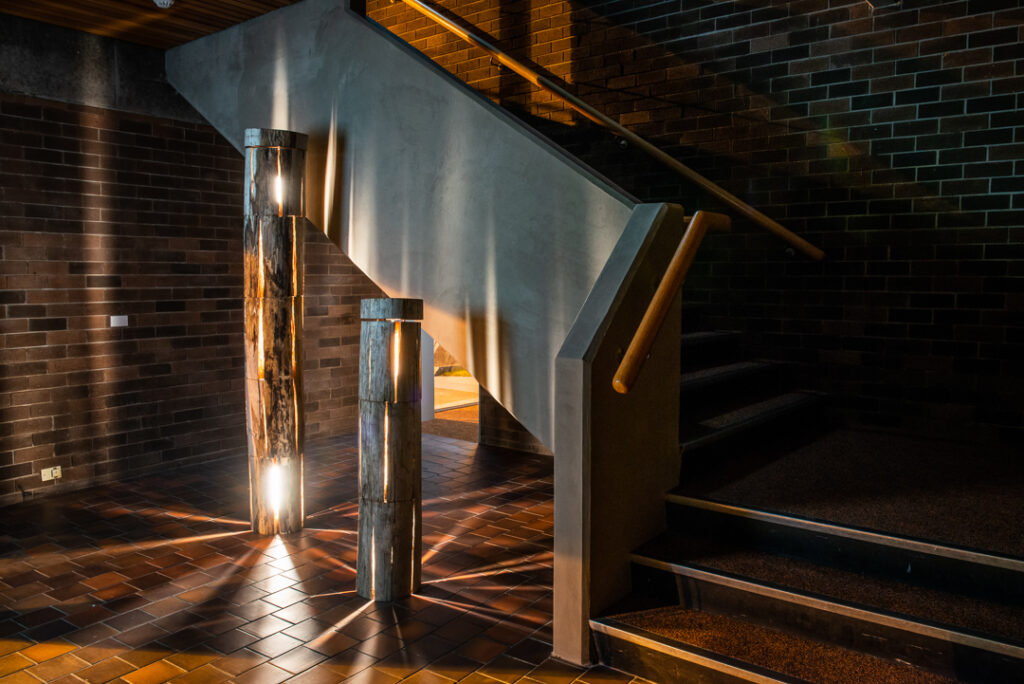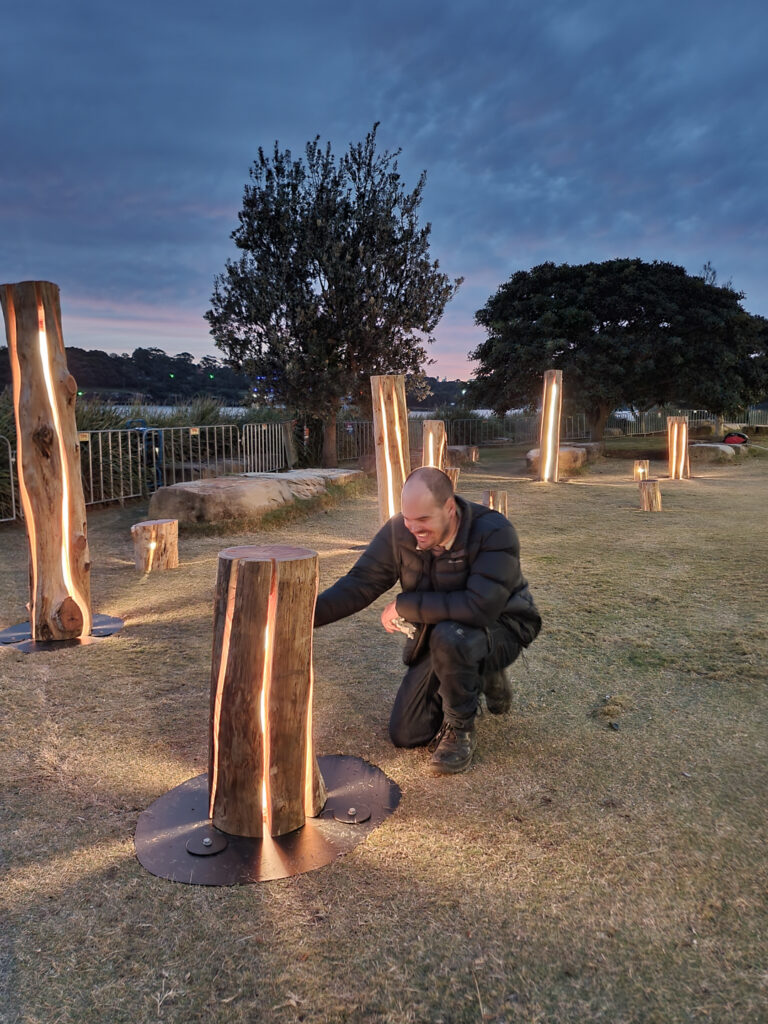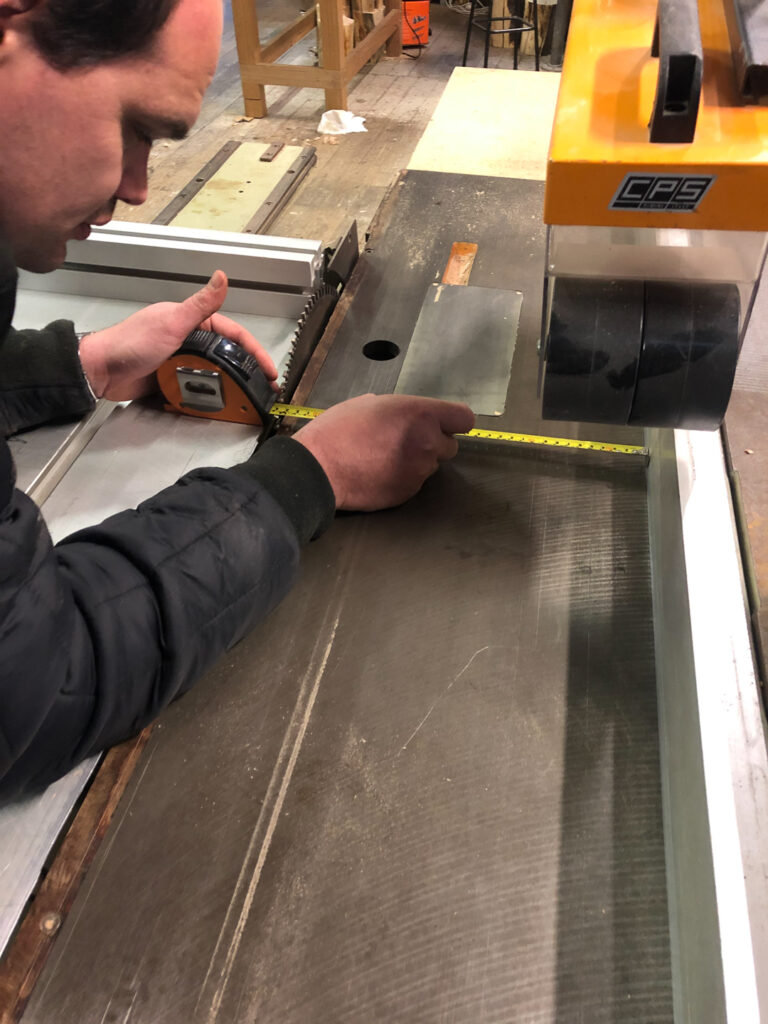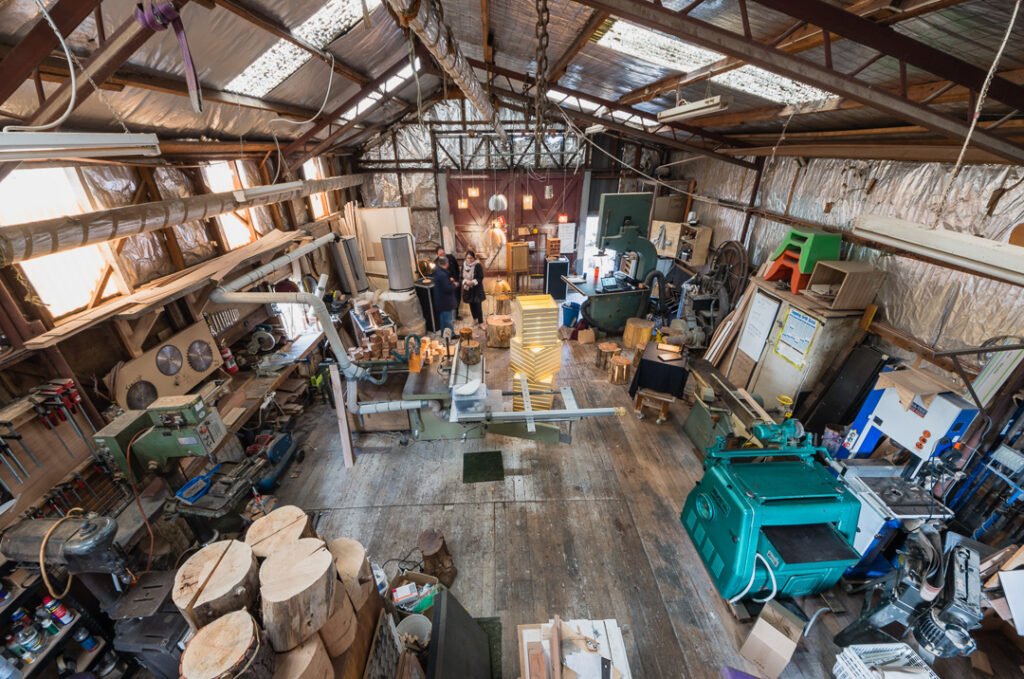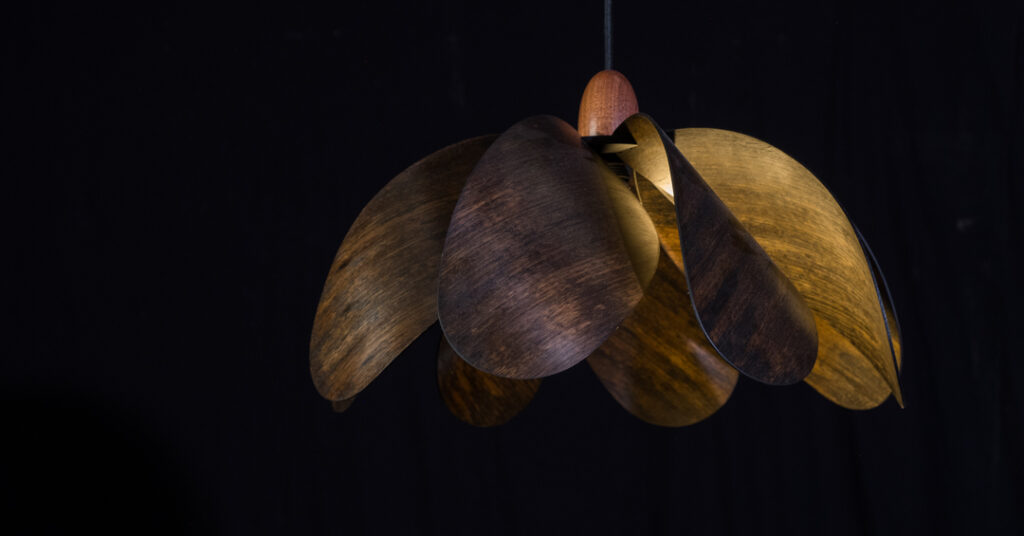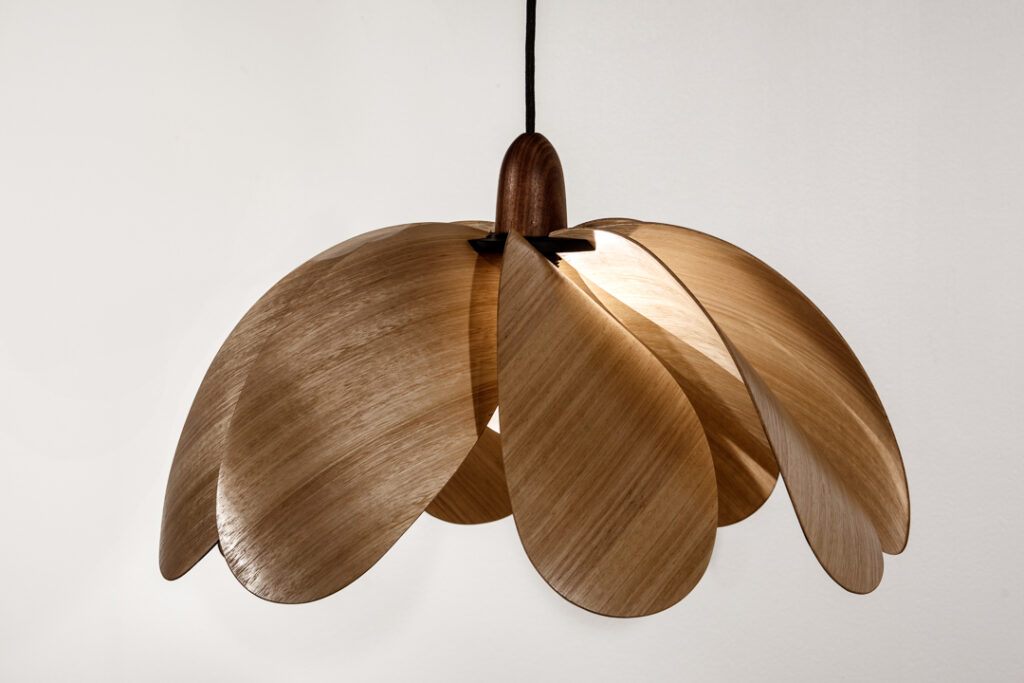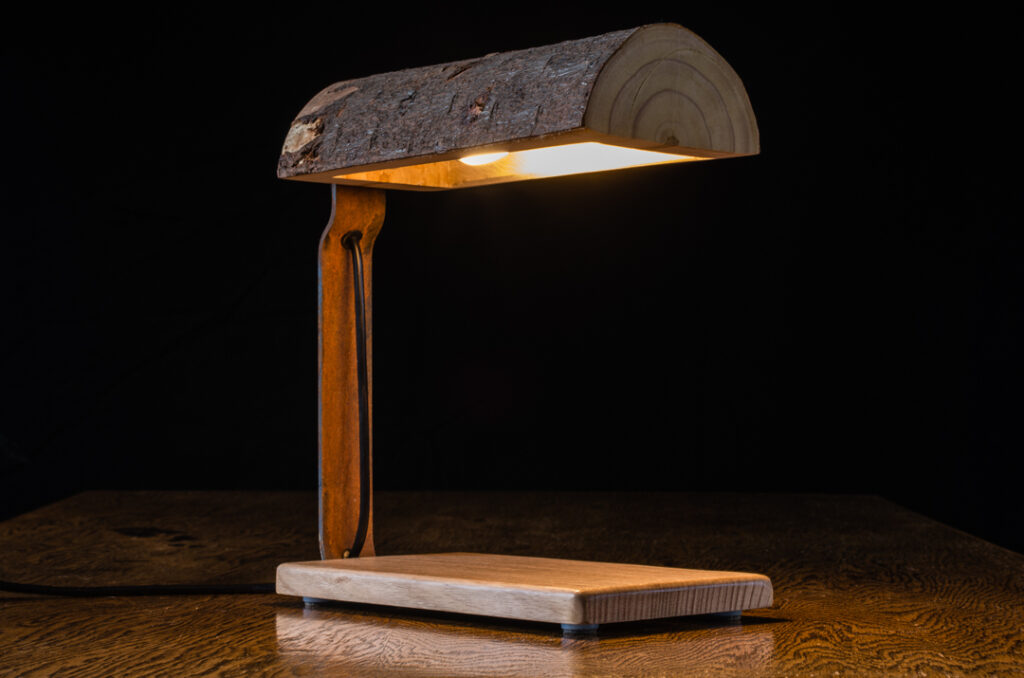
Duncan Meerding’s furniture and lighting are crafted with a precise touch, reflecting his vision of frayed light.
Duncan Meerding is drawn to dappled light. As a resident of Hobart, he finds many walks that take him through an enchanted scenery. Around kunanyi-Mt Wellington, he enjoys the Waterworks Reserves that end with “a cool little path with trees all overhead that lead up into the into the mountain”. There’s also the Pipeline track and Cathedral Rock, “There’s some really nice sort of dappled light that fall falls under that.”
Duncan has less than 5% of his sight remaining, making him legally blind. He was diagnosed at 18 with Lebers hereditary optic neuropathy (LHON), This leaves him particularly sensitive to “light emanating from the peripheries of the different objects, which reflects the alternative sensory world within which I design.”
This is particularly evident in his Tree Trunk lighting, which was commissioned for the Hobart College Theatre and also on display at VIVID Festival in Sydney’s Barangaroo.
- Duncan Meerding, Cracked log; photo: Peter Whyte
His iconic Stump Light has been installed in Google’s Singapore offices. Made from salvaged wood, its splintered rays lend a feel of the forest trail to an indoor space.
Duncan was introduced to furniture at the University of Tasmania. Motivated to turn it into a career, he then entered the Visions Australia Assist program to help set up his practice. He has been helped by many woodworkers, including Linda Fredheim, Simeon Dux and Damien Wright. The online community Woodworking for the Blind has also been useful.
He has learnt to make by feel rather the sight. “I cannot see well enough to cut to a line. However, this does not mean that I cannot cut out more complicated shapes utilising jigs.”
His workshop consists of the usual tools, like chisels, shaves, planes bandsaws. But there are also specialist “talking” tools for low-vision, including talking gauges and talking callipers.
(Sounds of talking tools in workshop.)
- Duncan Meerding in the workshop
- Duncan Meerding in the workshop
With experience, though, Duncan has learnt how to read subtle tactile and auditory cues in order to work with precision. The technique of “kissing the blade” involves taking a tiny amount off a piece of wood. “you can feel the resistance against what you’re kissing. I’m getting the vibe. You can feel and hear the sound of the tooth offset hitting the thing that you’re setting against.” This technique is good for measurements down to a quarter of a millimetre.
If I want to take the half milligram off, I’ll push them into the blade until they hear and feel a kiss. You have to make sure the blade isn’t deflected over. Then you pull it back and then cross-check to make sure the blade hasn’t been pushed by the equipment. Then you lock off the fence.
While this may seem something specific to the process of blind woodworking, it does give Duncan’s work a particularly tactile quality that enhances the user experience. His sensitivity to surface is evident in the work. He takes great care to sand the corners of his cube-shaped tea boxes to ensure they don’t poke any hands: “It needs to be something that you can feel to run your hand over every single corner every single place.”
Touch is a general value in his work. “The first thing people do is they touch when they see them for the first time, especially the log-base product because they don’t believe that it’s real. And it’s interesting that people trust their hands sometimes more than their eyes. They have to touch it to check it.”
- Duncan Meerding, Propeller light
- Duncan Meerding, Bankers lamp; photo: Jan Dallas
This sensitivity applies to design as well. While it is increasingly common for furniture design to be done initially on a screen, Duncan begins with three-dimensional models. “One of the limiting factors of design at the moment is a lot of design has been done in two dimensions” This is especially evident in his Propeller Light. This fits well with his commitment to classic design. Trends in fashion often involve the look of an object.
Duncan’s story is not just about someone achieving a professional career against the odds. He isn’t just reaching the standard level. He is also contributing something unique to furniture practice. He helps us counter the visual-centric bias in design. To understand that, you’ll just have to feel for yourself.
About Duncan Meerding
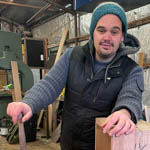 Duncan Meerding is a furniture and lighting design-maker living in Hobart, Tasmania. Visit www.duncanmeerding.com.au/ and follow @duncanmeerding
Duncan Meerding is a furniture and lighting design-maker living in Hobart, Tasmania. Visit www.duncanmeerding.com.au/ and follow @duncanmeerding

